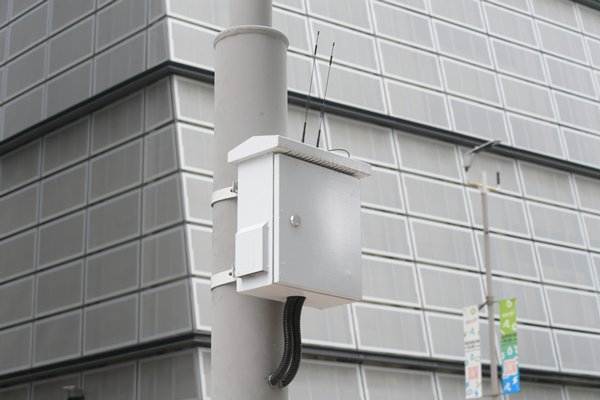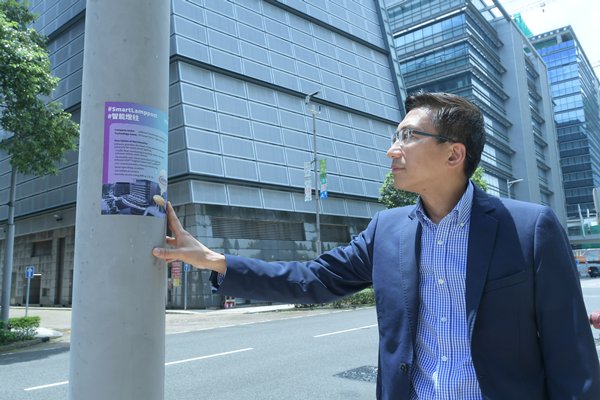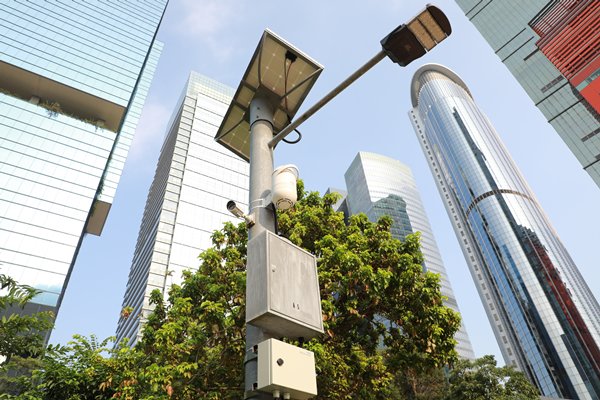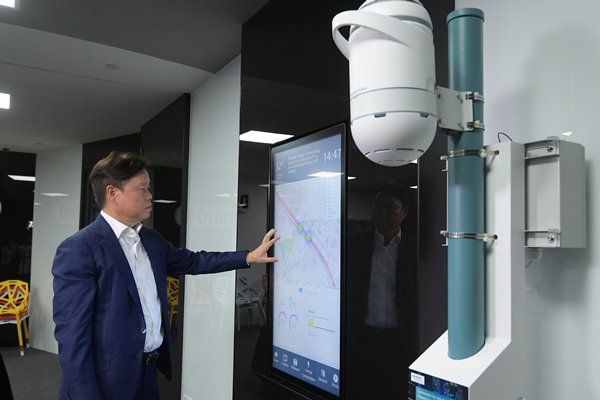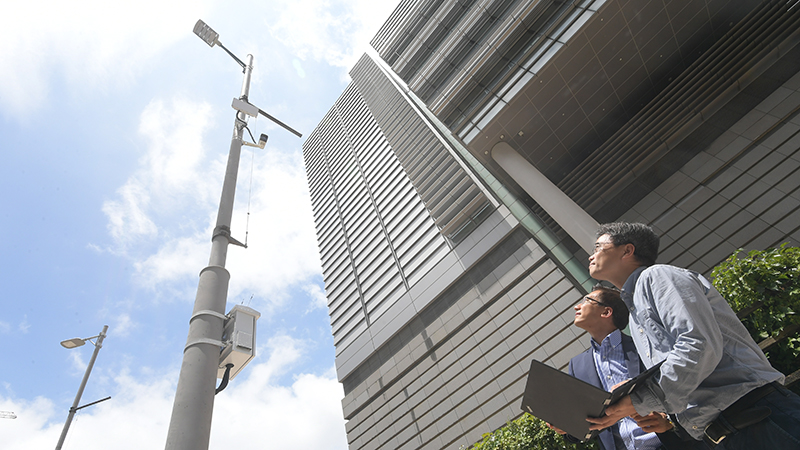Lighting up a smart city
Most people do not give a second thought to the lampposts that illuminate our city but a new generation of street lights has evolved into useful data collectors.
To develop Hong Kong into a world-class smart city, the Government will progressively install about 400 multi-functional smart lampposts in the next three years in four urban locations, to enhance the collection of real-time city data.
The first 50 smart lampposts are expected to come into operation in Kwun Tong and the Kai Tak Development Area before mid-2019.
Smart mobility
The Science Park has installed eight multi-functional smart lampposts for testing purposes using the technologies from five companies.
One of the lampposts is fitted with a sensor to detect the movement of pedestrians and vehicles on the street.
Its developer, a German semiconductor manufacturer said the data can be used to manage traffic flow.
“The radar can really understand how fast the vehicles are moving,” said the company’s Hong Kong managing director David Poon.
“Using big data analysis and using appropriate software, we are able to remotely use this information, make a decision and then control the traffic lights. In a way that, for example, we can allow the traffic to go more in one direction, therefore improving the traffic conditions.”
Mr Poon said the sensor has the advantage of not being affected by weather or lighting conditions, which makes it more reliable than an ultrasound or infrared camera, adding there will not be data privacy issues since no images are captured.
The developer noted that smart street lights can even help motorists find a parking space - what is more commonly known as “smart parking”.
The data uploaded from the smart lampposts is interpreted by cloud-based image analytics to assess if a parking space is available. This real-time parking occupancy information can then be sent to motorists, which can reduce the number of vehicles driving around looking for spaces and improve traffic flow.
Smart environment
Smart lampposts can also enhance liveability in cities by measuring the concentration of pollutants in the air.
A smart lamppost installed at the Science Park by another German tech firm not only collects weather data such as the temperature, air pressure and humidity, but can also monitor the air quality.
“Also through big data analytics and through artificial intelligence, we can make a prediction of the air quality in the days to come,” said the company’s president & CEO Eric Chong.
Mr Chong added that armed with such data, people can receive comprehensive information on the weather and air quality at their destination to help plan their journey.
Smart living
The key component that sets apart a “smart” lamppost from its humble predecessor is the sensor.
It can collect different types of data from all over the city which can be transferred to a secure cloud-based platform for analysis and related applications.
Street lights are omnipresent, so the “smart” versions can also serve as a particularly effective and increasingly important means to improve the 5G and WiFi network coverage.
Through testing the technology, the Science Park is able to share its experience and data with the Government to complement the development of Hong Kong into a smart city.
“It’s the data that’s being collected and data being analysed and data being used to generate new solutions,” said Peter Yeung, Hong Kong Science & Technology Parks Corporation Head of Electronics & ICT Clusters, Smart City Platform.
He added that in the near term, such technology could help develop schemes to enhance people’s quality of living, while for the medium and longer term, the information could be used for urban planning.
